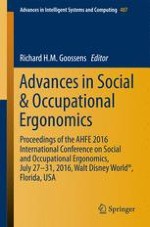This book reports on cutting-edge research related to social and occupational factors. It presents innovative contributions to the optimization of sociotechnical management systems, which consider organizational, policy, and logistical issues. It discusses timely topics related to communication, crew resource management, work design, participatory design, as well as teamwork, community ergonomics, cooperative work, and warning systems. Moreover, it reports on new work paradigms, organizational cultures, virtual organizations, telework, and quality management. The book reports on cutting-edge infrastructures implemented for different purposes such as urban, health, and enterprise. It discusses the growing role of automated systems and presents innovative solutions addressing the needs of special populations. Based on the AHFE 2016 International Conference on Social and Occupational Ergonomics, held on July 27-31 in Walt Disney World®, Florida, USA, the book provides readers with a comprehensive view of the current challenges in both organizational and occupational ergonomics, highlighting key connections between them and underlining the importance of emotional factors in influencing human performance.
